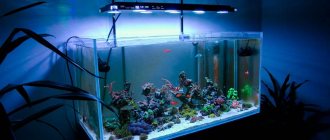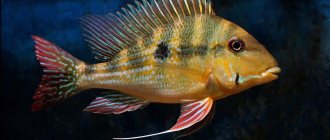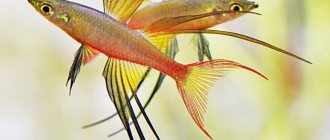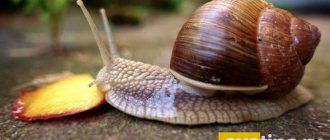Caring for an aquarium is similar to cleaning a house, the same simple rules to stay healthy and clean, and regularity. In this article you will learn how to properly care for a home aquarium, what important little things there are and how often to do it.
Why do you need to siphon the soil? What cleaning products can I use? How to wash the filter sponge? Why and how to change the water in the aquarium? You will find answers to these and other questions.
Choosing an aquarium
Before determining which aquarium is best, you need to carefully analyze the room space, because the place to put the aquarium is chosen depending on the size and amount of equipment for the tank. Depending on the design, artificial reservoirs are divided into the following types:
- frame;
- corner;
- concave;
- frameless;
- hanging;
- on legs or stands.
Having decided on the design, you need to choose the shape of the tank. A home aquarium can be provided in the following models:
- rectangular container;
- aquarium-sphere;
- jebo aquarium;
- aquarium glass;
- polygonal tank;
- triangular container.
These are the most common forms of reservoirs, but there are designer models of reservoirs: labyrinths, wall aquariums, reservoirs in the form of televisions, sinks and many other different designs. Of course, for beginners in aquarium keeping, it is better to choose a small traditional model for the first aquarium. Also, tanks for keeping fish are classified into freshwater and marine. The latter can contain exotic representatives. It should be borne in mind that starting and maintaining a marine aquarium at home requires certain knowledge.
When purchasing a new aquarium, professionals advise the novice aquarist to follow two rules:
- First, determine a place in the house for the aquarium.
- The size of the reservoir is chosen depending on the number and types of fish.
If aquarium fish have not yet been selected, then the capacity of the reservoir is determined on the basis of 1 cm of phenotype = 1.5 liters of water. It is important that there are sockets near the place for the aquarium. Having decided on the shape and size of the tank, you need to begin selecting accessories and equipment, without which it is impossible to create underwater depths.
If you wish, you can pay attention to making an aquarium with your own hands. However, this will require careful study of the technology and some time to work.
Removing fouling on glass
Algae is removed from glass with special scrapers. There are magnetic, plastic, and with a razor blade. When using scrapers with a metal blade, a novice aquarist needs to be careful and careful, as you can scratch the glass or accidentally cut the silicone sealant that holds the glass of the jar together. Scrapers with plastic blades are safer.
In small aquariums, you can use a plastic bank card instead of scrapers. If there is no fouling, then the glass can be cleaned with a clean dishwashing sponge.
Accessories and equipment
In specialized stores, artificial ponds are sold together with covers or nets intended for attaching equipment. They also protect overly active fish so that the pets do not jump out of the aquarium. Lids are often equipped with lighting fixtures, which is very convenient. It should be noted that the power of the built-in lamps may not be suitable for certain phenotypes, so it is better to immediately clarify all the nuances in the store.
To get fish and plant plants, an aquarium for beginners must be equipped with the following equipment:
- light bulbs;
- heaters;
- thermometer;
- ultraviolet lamp for aquarium;
- filter;
- siphon for aquarium;
- an aerator that supplies oxygen to the aquarium.
This is a list of standard equipment, without which it is impossible to start a reservoir. Additionally, they buy aquarium charcoal, shelves for food, various trinkets, and air stones. Also, various decorations are purchased for the aquarium to decorate the tank: grottoes, shelters, caves, models of sunken ships and boats, pebbles and driftwood.
Correct lighting
Fish in an aquarium require a sufficient amount of light, which affects their well-being, activity and survival of their offspring. Please note that natural light will not be enough, so you need to take care of purchasing special equipment. There are lamps that not only illuminate, but also disinfect water with ultraviolet radiation.
Soil and plant selection
When purchasing an aquarium for your home, you should decide on the type of soil and vegetation. For a beginner, it is important to know that ordinary sand or pebbles from a river are not suitable for an artificial pond, because the soil plays an important role - without it it is impossible to breed fish and plant plants. A universal substrate is considered to be rolled fine gravel or basalt soil - this type of substrate softens water. The recommended soil thickness is 4–7 cm, but deviations are possible depending on the types of flora.
Before growing plants, the quantity and type of flora are determined. There should be enough algae to saturate the water with oxygen, but not too much, otherwise the fish will have nowhere to swim. Beginning aquarists choose unpretentious species: elodea, vallisneria, cryptocoryne; among floating ones, they prefer riccia and duckweed. You can also learn how to make your own herbal tea.
Also, aquarium owners often place Java moss or different types of ferns in the pond. As soon as the soil and plants are selected, they begin to launch the aquarium.
Install a filtration system
A properly selected artificial filtration system will help keep water clean longer and prevent the growth of harmful bacteria.
Natural filters such as Siamese algae eaters, otocinclus, ancistrus, shrimp and neretina snails will help maintain a healthy ecosystem and extend the time between cleaning the aquarium. The latter are unpretentious and do an excellent job of cleaning the aquarium from soft waste, algae on the walls, plants and decor. The only disadvantage of snails is their high reproduction rate.
Starting an aquarium
Before you get fish, it is necessary to establish biological balance in the reservoir, because pets are not placed in a new, just launched tank. It is also important to know what kind of water to put in the aquarium.
So, the first start of the aquarium - where to start:
- the reservoir is filled with water, checking the integrity of the seams;
- lay out the soil, plant the plants;
- install decorations and decorations;
- include equipment.
The biological balance is established within a week, and at this time aquarists finally decide on the fish and buy pets. In order for water parameters to normalize, professionals advise diluting conditioners and mineral fertilizers in the water, about which you can separately consult with specialists.
As soon as the biological balance in the tank is normalized, you can introduce the first inhabitants of the reservoir - frogs for the aquarium, mollusks or shrimp. They will tell you if everything is okay with the aquatic environment, and within a week they will stock the fish.
Small inventory
But for normal maintenance of the reservoir you will need some more accessories.
Net
Without this simple device, it will be very problematic to place fish, for example, during spawning.
Glass scraper
Required to remove solid contaminant deposits on the inner surface of the aquarium walls.
Bottom cleaning siphon
Necessary for removing contaminants from the bottom without completely restarting the reservoir.
Feeders
Without these floating circles and rectangles, the food will spread across the entire surface of the water. In addition, it is much easier for fish to pick up food in one place.
Special household chemicals
Special chemicals are used to clean glass, but you need to remember: the “stronger” the product, the more thoroughly it needs to be washed off .
Ideally, the fish are removed from the reservoir into a temporary tank, and after cleaning the aquarium is left with water to remove all possible harmful impurities.
Buying fish
Keeping and caring for fish is a responsible matter, because they are living creatures that require care and attention. Before you get pets, you should decide on the type of inhabitants. It is better for novice aquarists to breed fish that do not have complex contents, namely:
- mollies;
- guppy;
- zebrafish;
- barbs;
- platies;
- swordtails.
The above phenotypes are distinguished by their endurance, small size and bright color. Together with them, catfish are introduced, which clean the tank from food debris and organic matter, helping the owner. If you want to have exotic or larger pets, then aquarium professionals recommend purchasing the following types of fish for beginners:
- black-striped cichlamosis;
- astronotus;
- Sumatran barb;
- glass perch;
- fighting cocks.
These species are also beautiful, colorful and hardy, but they will have to be cared for more carefully. Phenotypes also require a lot of space - from 50 liters of water per specimen, and are characterized by aggressive behavior, so these species should not be kept with small fish.
Choosing fish
Start your journey in aquarium keeping with small, unpretentious aquarium fish. Beautiful, unpretentious fish suitable for the role of first aquarium pets:
- viviparous (guppies, platies, swordtails, mollies);
- catfish (Ancistrus, Corydoras);
- zebrafish;
- cardinal;
- lalius.
These fish live in different temperatures and water conditions, making them a must-have for a beginner.
Feeding
Grains of food for the inhabitants of the upper layers of water should not fall to the bottom. Special dry balanced food is sold for different types of fish. Diversify your diet with plant foods and frozen food.
Pets must eat all the food given to them within five minutes.
Treat food with boiling water; for small fish, serve chopped food. Large aquarium inhabitants are given large granules. Feed the fish at the same time, create a diet based on their needs.
General recommendations
Beginner aquarists will find useful tips and recommendations, which include the following steps:
- Professionals recommend a rectangular shape for the reservoir, while the height should be greater than the width and less than the length.
- The artificial pond is placed on a flat surface without depressions, depressions or cracks. The edges of the tank should not protrude beyond the limits, otherwise the container may collapse.
- When choosing the shape of a reservoir, it is better not to buy an aquarium-glass or ball. Curved walls refract light incorrectly, causing the fish to become stressed.
- Compliance with the temperature regime and the required water parameters will help avoid illness and death of pets.
- Once you add fish to the aquarium, you need to take care of them. Pets are fed once a day, using a balanced and varied diet. Remains of food are removed from the pond to prevent the risk of harmful algae. You cannot overfeed your pets.
- Water renewal is carried out weekly, replacing 25% of the volume. Clean the aquarium and soil regularly, removing food debris, plaque, organic debris and other dirt.
- The operation of the filter and aerator is periodically checked for failures.
- The duration of daylight should be no more than 11 hours, otherwise there is a high risk of the appearance of parasitic algae.
By choosing and purchasing everything you need, as well as following the recommendations and rules, you can create a real miracle at home - an aquarium with colorful underwater inhabitants and strange green flora. However, it is important to remember that maintaining an artificial reservoir is a task that requires constant attention and control; therefore, it is better not to place an aquarium for irresponsible people. After all, it’s not enough to just buy a tank and fish, you need to care for and love your pets - and then they will reciprocate.
What cleaning products can I use?
None . It is very important to rinse the filter with water only. And it is also important that the water comes from the aquarium. Tap water contains chlorine, which kills harmful bacteria in the water. But he doesn’t know how to figure it out and also kills the beneficial bacteria living in the internal filter.
The settled water can be used. But here again, there is different water with different hardness, acidity and temperature and it can affect the colony of bacteria. So the best method is to take water from the aquarium and rinse the filter and its contents in that water.
Ideally, even the container in which it is washed should be used only for the needs of the aquarium; if you use it to wash the floors, then the chance that the chemical will remain in the container is quite significant.
And it is important not to wash everything until it shines, just rinse well.
Lifespan
The lifespan of aquarium fish depends on the conditions of care, proper nutrition and species characteristics. They live from 4 to 30 years. The table shows the average duration of popular types:
Large species and those that lay eggs live longer than viviparous and small fish.











